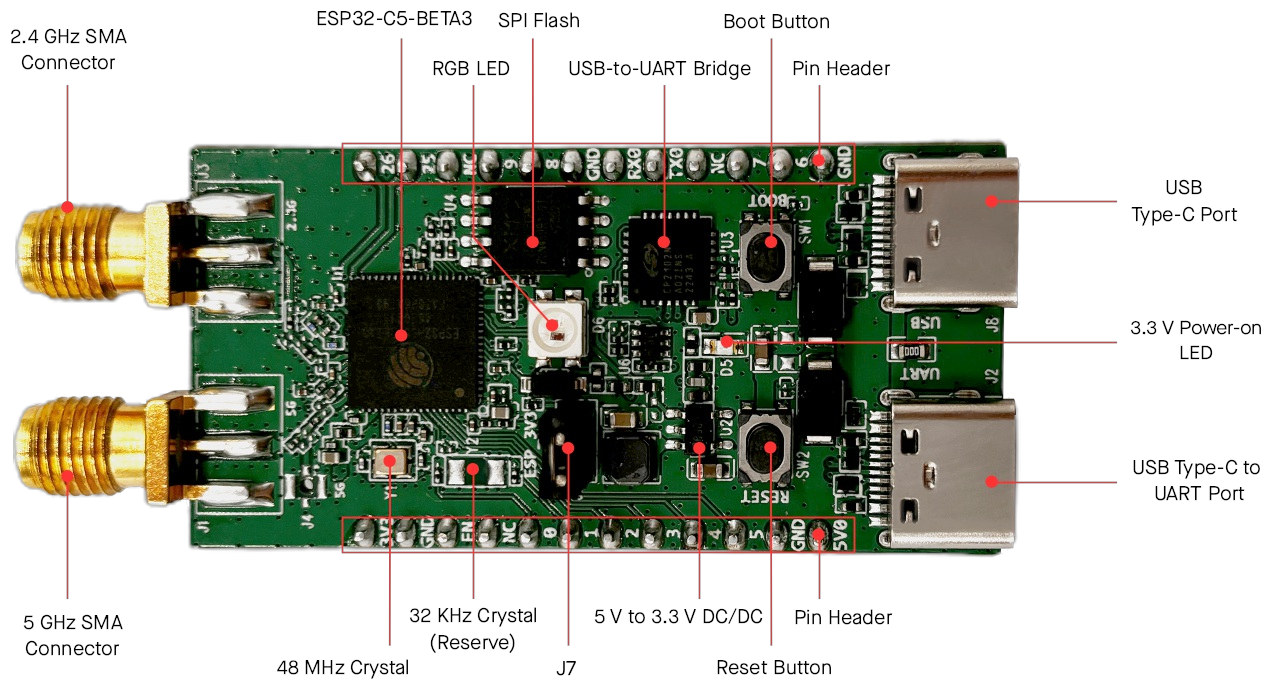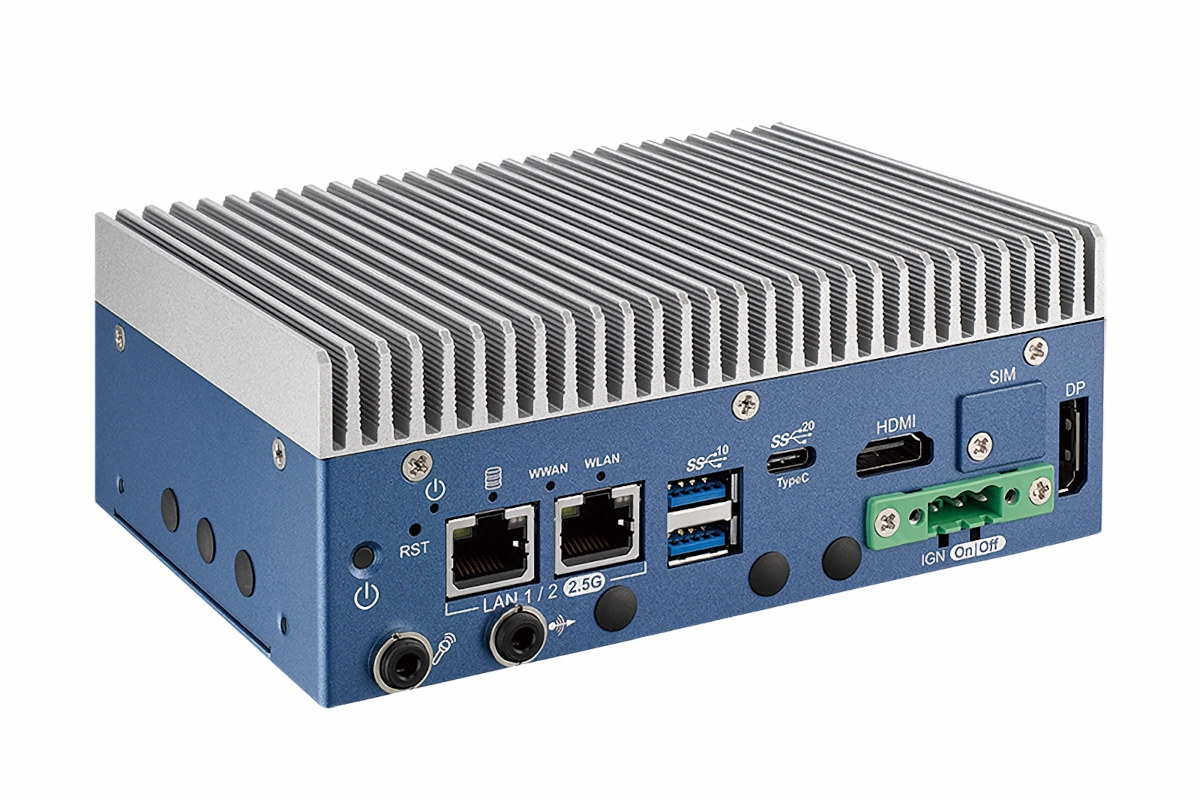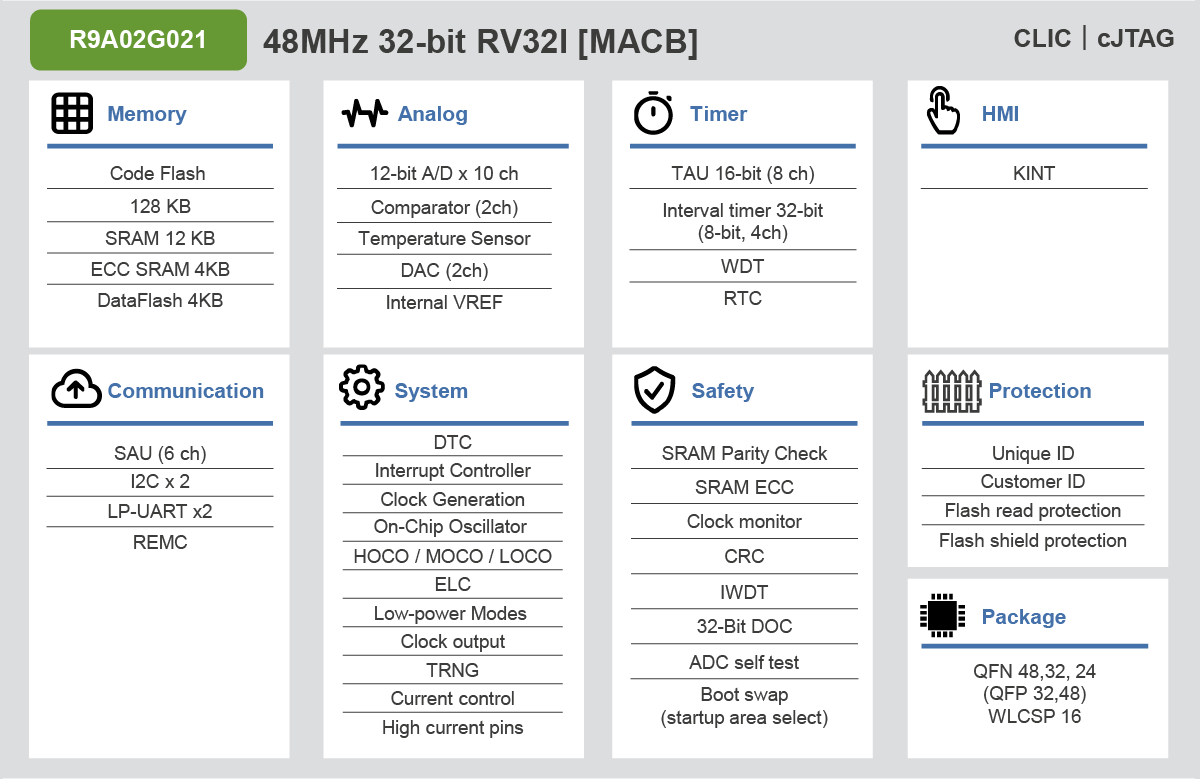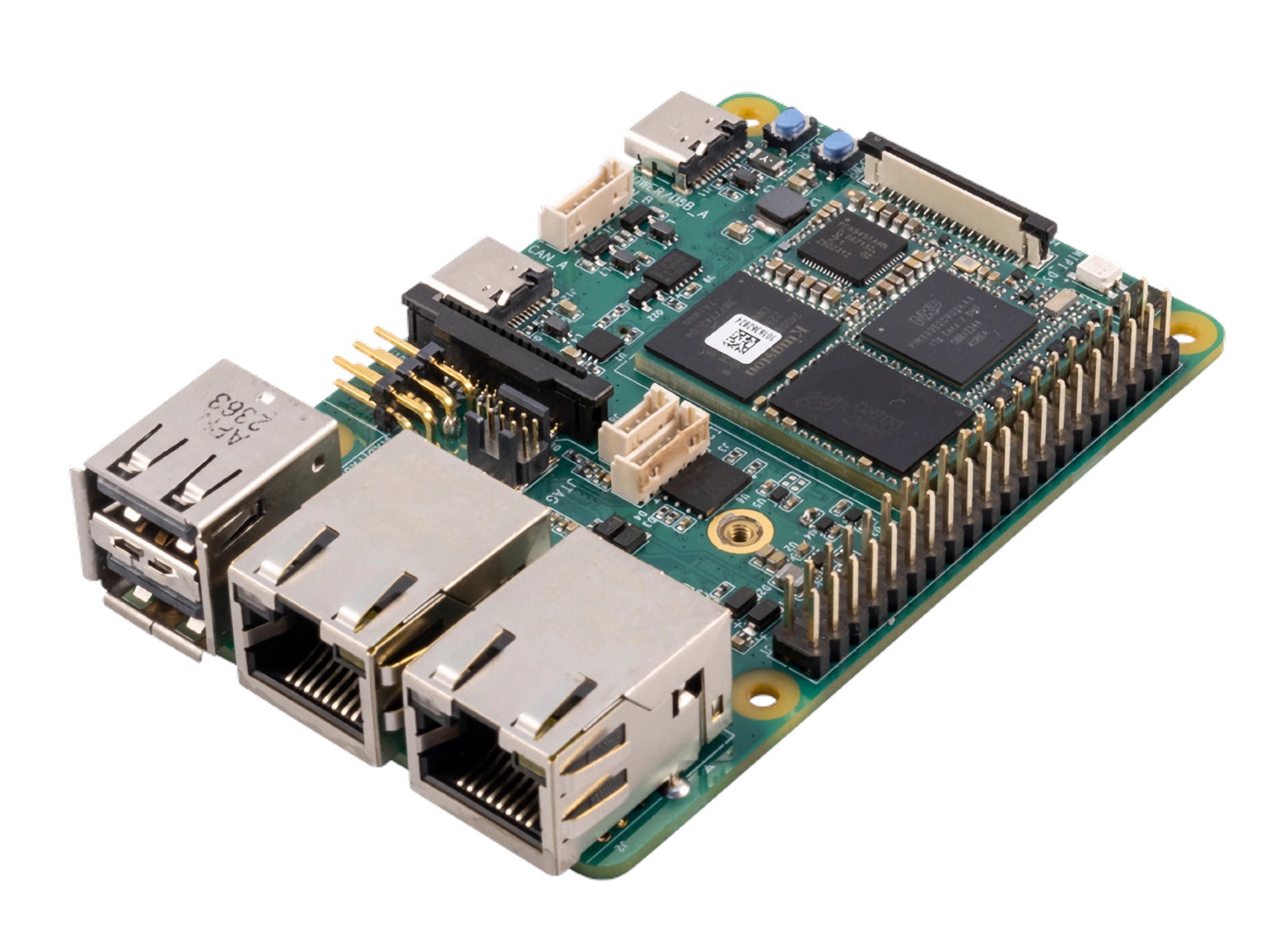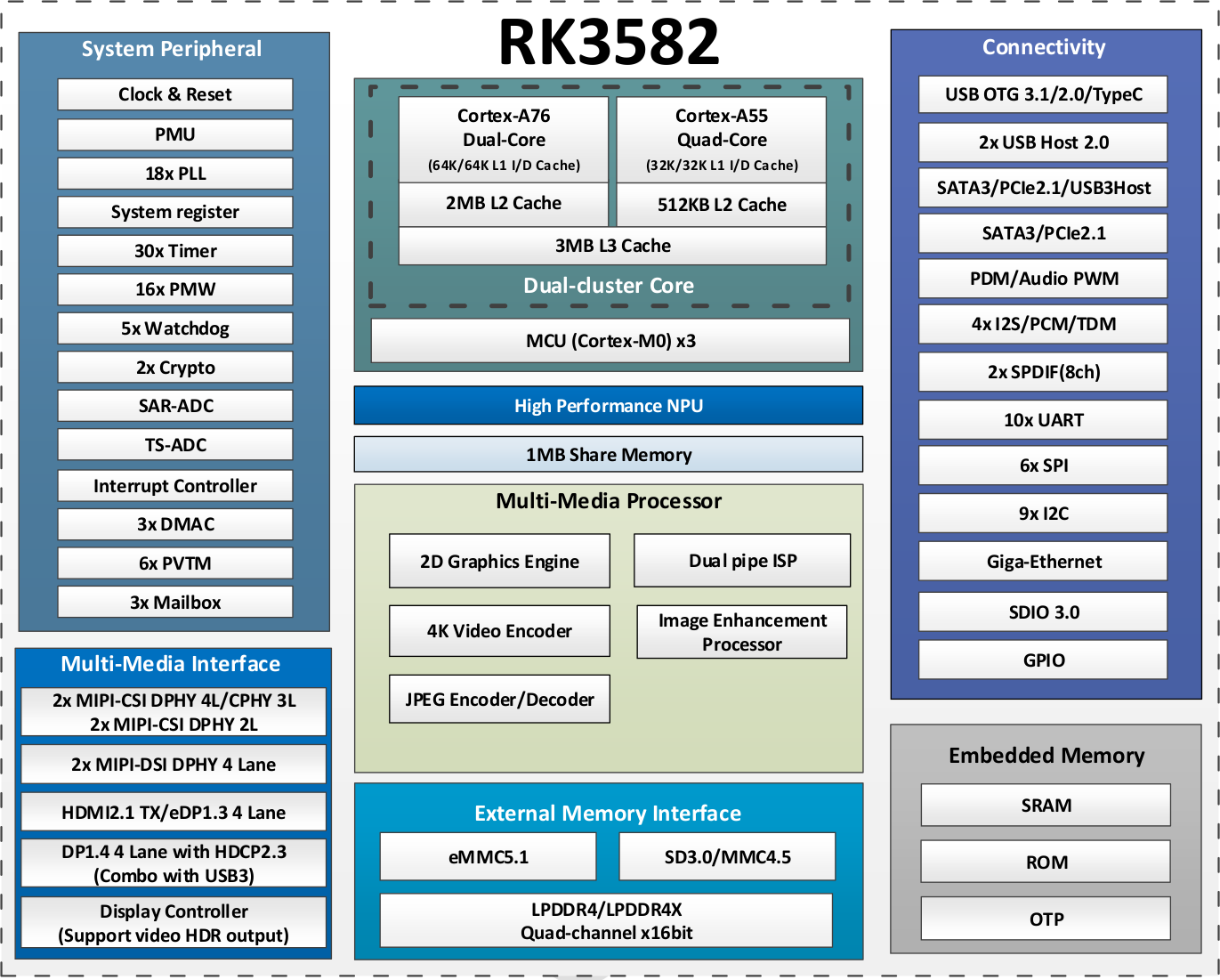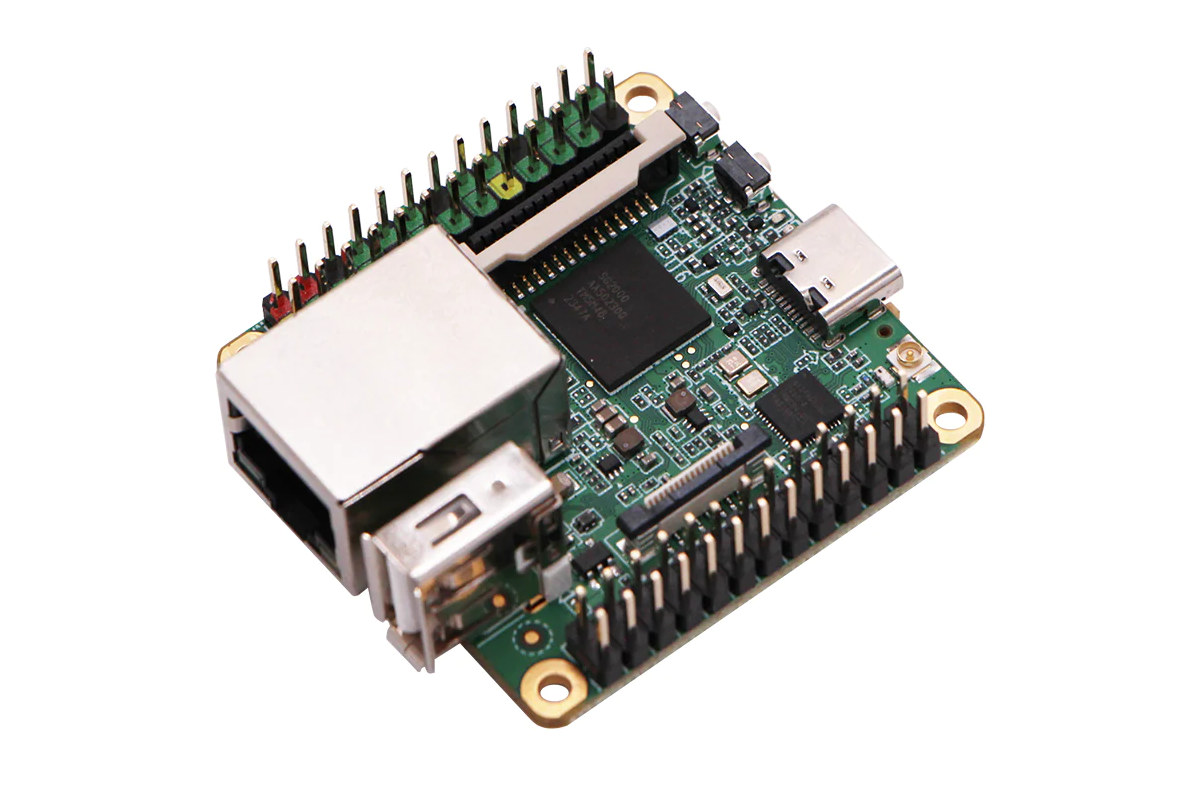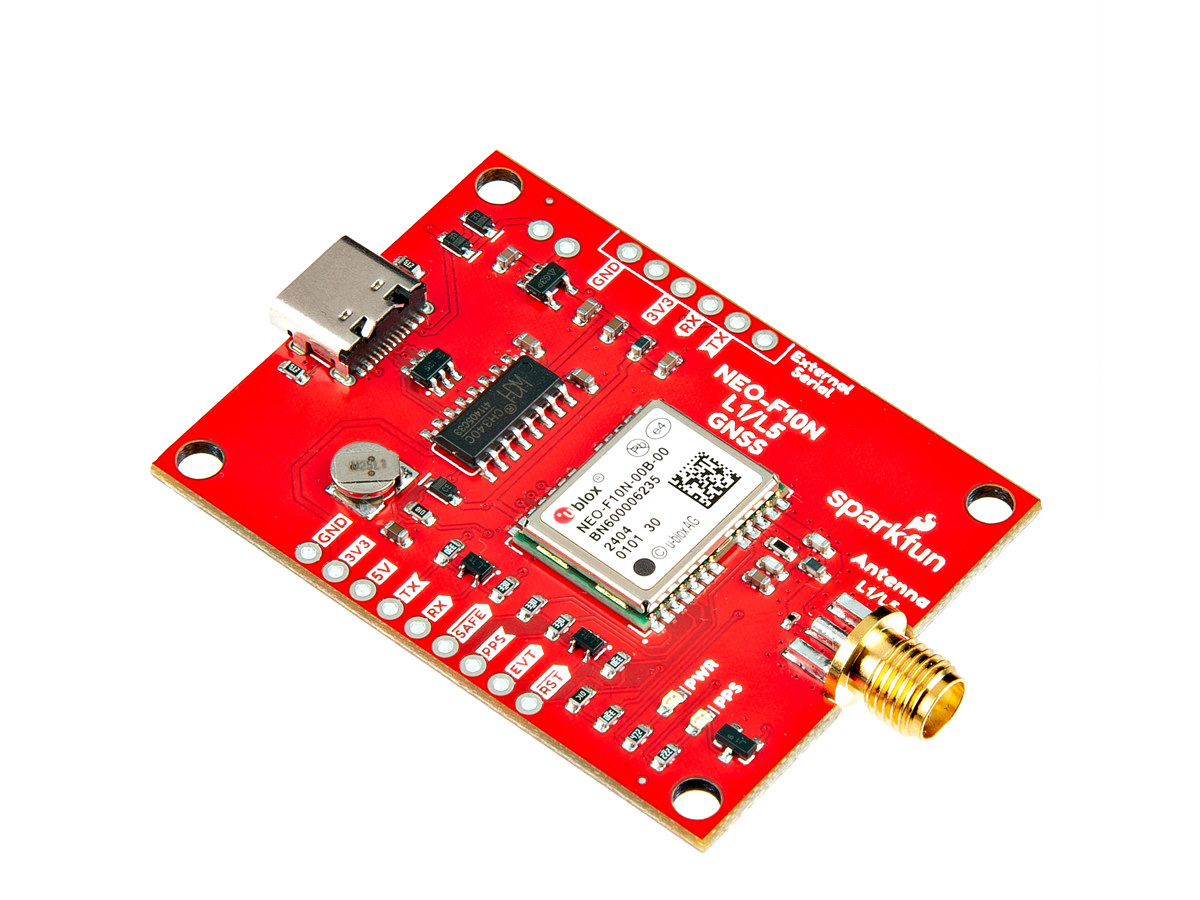Ambiq Apollo510 Arm Cortex-M55 microcontroller delivers 30 times better power efficiency than typical Cortex-M4 designs and 10 times the performance of the Apollo4 Cortex-M4 sub-threshold microcontroller for AI and ML workloads. The new MCU also comes with 4MB NVM, 3.75MB SRAM, a 2.5D GPU with vector graphics acceleration that’s 3.5 times faster than the Apollo4 Plus, and support for low-power Memory-in-Pixel (MiP) displays. Like all other Ambiq microcontrollers, the Apollo510 operates at sub-threshold voltage for ultra-low power consumption and implements security with the company’s secureSPOT platform with Arm TrustZone technology. Ambiq Apollo510 specifications: MCU Core – Arm Cortex-M55 core up to 250 MHz with Arm Helium MVE, Arm TrustZone, FPU, MPU, 64KB I-cache, 64KB D-cache, 256KB I-TCM (Tighly Coupled Memory), 256KB D-TCM, Graphics – 2.5D GPU clocked at 96 MHz or 250 MHz with vector graphics acceleration, anti-aliasing hardware acceleration, rasterizer/full alpha blending/texture mapping, texture/framebuffer compression (TSC4, 6, 6A and […]
ESP32-C5 beta board features 2.4GHz and 5GHz SMA antenna connectors, two USB-C ports
Espressif ESP32-C5 microcontroller was announced in June 2022 as the first dual-band WiFi 6 IoT chip from the company. It’s been quiet since then, but things are about to change as the ESP32-C5 beta board’s documentation has very recently been released. The ESP32-C5 was initially announced as a dual-band WiFI 6 and Bluetooth 5.0 LE SoC, but the user manual for the beta board indicates that it also supports Zigbee 3.0 and Thread 1.3, so there’s an 802.15.4 in the wireless microcontroller. The ESP32-C5 board itself features two SMA connectors for 2.4 GHz and 5GHz antennas or test equipment, two USB-C ports, two 12-pin GPIO header, Boot and Reset buttons, an RGB LED, and a 2-pin header for current measurements. ESP32-C5 beta board specifications: SoC – ESP32-C5-BETA3 CPU – Single-core 32-bit RISC-V processor @ up to 240 MHz Memory – 400KB SRAM on-chip Storage – 384KB of ROM on-chip, support […]
Vecow SPC-9000 fanless embedded system is powered by an Intel Core 7 Ultra 165U or Core 5 Ultra 135U SoC
Vecow SPC-9000 fanless embedded system is powered by the 14th Gen Intel Core Ultra 7 165U or Core Ultra 5 135U 12-core Meteor Lake processor and targets Edge AI applications for factory management, data acquisition & monitoring, autonomous mobile robots (AMR), Smart Retail, and more. The device supports up to 32GB DDR5 RAM, offers M.2 PCIe sockets and a 2.5-inch SATA bay for storage, can drive up to three 4K displays through HDMI, DP, and USB-C ports, features two 2.5GbE ports, and a few USB ports. The SPC-9000 can also be fitted with a 4G LTE module, comes with two RS232/422/485 serial ports, takes a wide 9V-55V DC input voltage range, and can operate up to a -40°C to 75°C temperature range depending on the model. Vecow SPC-9000 specifications: Meteor Lake SoC (one or the other) Intel Core Ultra 7 165U 12-core (2P+8E+2LPE) processor @ 1.2 / 1.7 / 4.9 […]
R9A02G021 is the first microcontroller with Renesas 32-bit RISC-V CPU core design
Renesas R9A02G021 is the first MCU group to use the company’s in-house designed 32-bit RISC-V CPU core with 3.27 CoreMark/MHz, RV32I base plus M/A/C/B extensions, and features such as a stack monitor register, a dynamic branch prediction unit, and a JTAG debug interface. Renesas has been making RISC-V chips at least since 2022 with the likes of RZ/Five 64-bit microprocessor and R9A06G150 32-bit voice control ASSP. All those were based on Andes RISC-V cores, but since the company has now designed its own 32-bit core, future Renesas 32-bit RISC-V microcontrollers are all likely to feature the in-house core, starting with the R9A02G021 general-purpose MCU group. Renesas R9A02G021 key features and specifications: RISC-V Core Renesas RISC-V instruction-set architecture (RV32I + MACB + Ziscr, Control and Status Register (CSR) instructions + RISC-V Zifencei Instruction-Fetch Fence) Maximum operating frequency – 48 MHz Debug and Trace – RISC-V External Debug Support cJTAG Debug Port […]
MaaXBoard OSM93 – Business card-sized SBC features NXP i.MX 93 AI SoC, supports Raspberry Pi HATs
MaaXBoard OSM93 is a single board computer (SBC) based on a Size-S OSM module powered by an NXP i.MX 93 Cortex-M55/M33 AI SoC and offered in a business card form factor with support for Raspberry Pi HAT boards through a 40-pin GPIO header and mounting holes. The board also comes with 2GB LDDR4, 16GB eMMC flash, MIPI CSI and DSI interfaces for optional camera and display modules, two gigabit Ethernet ports, optional support for WiFi 6, Bluetooth 5.3, and 802.15.4, three USB 2.0 ports, and two CAN FD interfaces with on-board transceivers. MaaXBoard OSM93 specifications: SoC – NXP i.MX93 CPU 2x Arm Cortex-A55 up to 1.7 GHz 2x Arm Cortex-M33 up to 250 MHz GPU – 2D GPU with blending/composition, resize, color space conversion NPU – 1x Arm Ethos-U65 NPU @ 1 GHz up to 0.5 TOPS Memory – 640 KB OCRAM w/ ECC Security – EdgeLock Secure Enclave System […]
Rockchip RK3582 is a cost-down version of RK3588S with two Cortex-A76 cores, four Cortex-A55 cores, no GPU
Rockchip RK3582 hexa-core SoC is pin-to-pin compatible with the popular Rockchip RK3588S octa-core Cortex-A76/A55 SoC, but only features two Cortex-A76 cores, a 5 TOPS NPU (instead of 6 TOPS) and does not come with a 3D GPU. I was first made aware of the Rockchip RK3582 in October 2023 when I was sent a photo of a board allegedly for a TV box, but while the RK3582 still features a 4K video decoder, the lack of a 3D GPU could make it problematic with 3D accelerated user interface. We now have more details with Radxa having released the datasheet and a few more interesting details. Rockchip RK3582 specifications: Hexa-core CPU – 2x Cortex-A76 and 4x Cortex-A55 cores in dynamIQ configuration (frequencies are still shown as TBD in the datasheet) GPU No 3D GPU 2D graphics engine up to 8192×8192 source, 4096×4096 destination AI Accelerator – 5 TOPS NPU 3.0 (Neural […]
Duo S RISC-V/Arm SBC features Sophgo SG2000 SoC, Ethernet, WiFi 6, and Bluetooth 5 connectivity
Shenzhen MilkV Technology’s Duo S is a tiny SBC based on the 1 GHz Sophgo SG2000 Arm Cortex-A53 and RISC-V SoC with 512MB DDR3 (SiP), Fast Ethernet, WiFi 6, and Bluetooth 5 connectivity, and a switch to select Arm or RISC-V architecture before powering the board. We already had covered SG2002 Arm/RISC-V boards with 256MB RAM, namely the LicheeRV Nano and Duo 256M, but for people needing more memory, the Duo S provides another option that also features two 2-lane MIPI CSI connectors, a USB 2.0 host port, and two 26-pin headers for expansion. Its form factor reminds me of FriendlyELEC’s NanoPi NEO and family powered by Allwinner processors that were introduced a few years ago. Duo S specifications: SoC – SOPHGO SG2000 Main core – 1 GHz 64-bit RISC-V C906 or Arm Cortex-A53 core (selectable) Minor core – 700 MHz 64-bit RISC-V C906 core Low-power core – 25 to […]
SparkFun’s latest GNSS breakout board features u-Blox NEO-F10N L1/L5 dual-band receiver for urban environments
The SparkFun GNSS L1/L5 Breakout is a standard precision GNSS board with meter-level positional accuracy that features the u-Blox NEO-F10N dual-band module, an SMA antenna connector, and a USB-C port for power and data. As its name implies, the board relies on the L1/L5 bands of the NEO-F10N instead of the more commonly seen L1/L2 bands and delivers better performance in urban environments. That’s because the L5 band falls within the protected ARNS (aeronautical radionavigation service) frequency band leading to less RF interference. SparkFun GNSS L1/L5 Breakout specifications: GNSS u-Blox NEO-F10N module with L1/L5 dual-band GNSS receiver Concurrent Reception of GPS, Galileo, and Beidou Integrated SMA Connector Time to First Fix: 28s (cold), 2s (hot) Max Navigation Rate for Single GNSS Configuration (GPS): 20 Hz Positional Accuracy (GPS) – 1.5m Time Pulse Accuracy – 30ns Operational Limits Max G: ≤ 4G Max Altitude: 80km Max Velocity: 500m/s Supports NMEA, UBX […]



